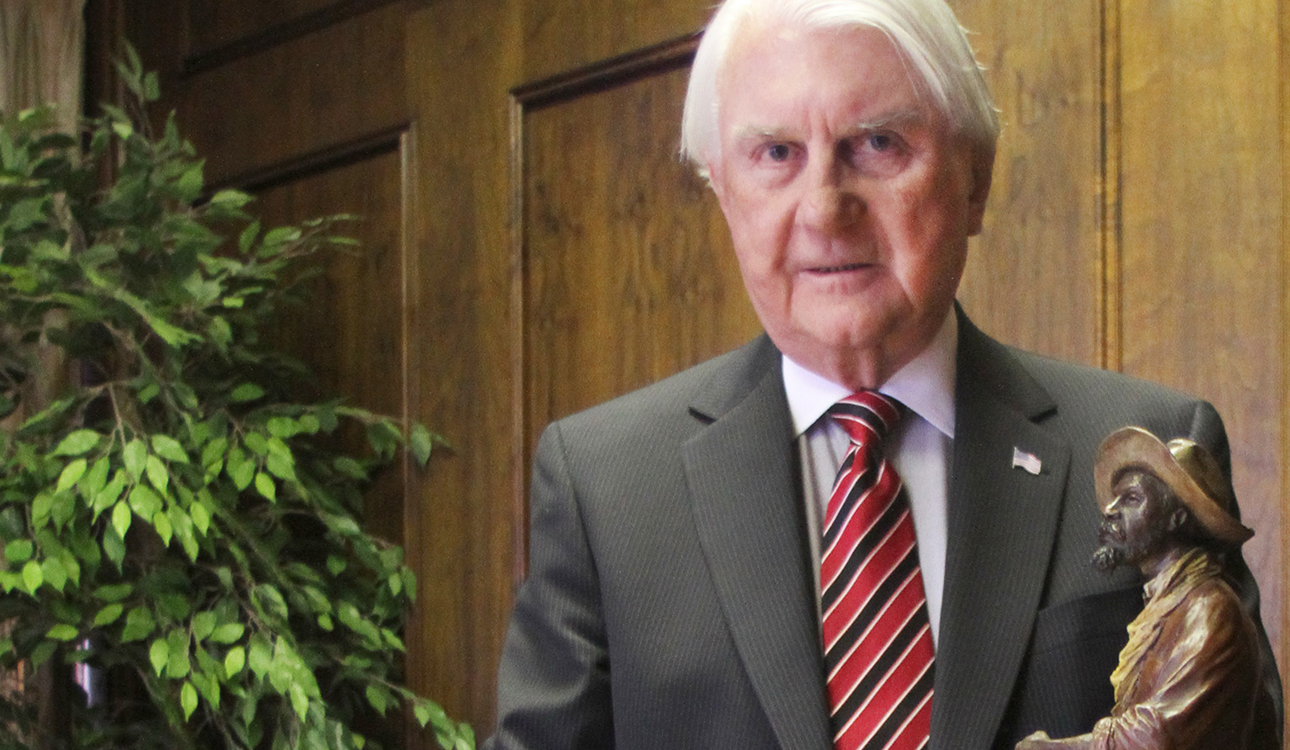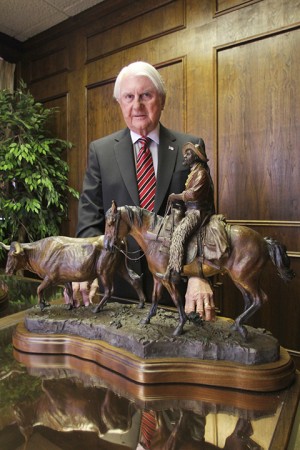

Matt Hellman | Lariat Photo Editor
By Kate McGuire
Staff Writer
Waco history is coming to life for citizens and tourists via the cattle drive statues in front of the Waco Suspension Bridge.
The statues are meant to represent the cattle drive of the Chisholm Trail, which passed through Waco.
The statues, which currently feature 10 cattle and two ranchers, are a work in progress, as more statues are coming.
Clifton Robinson, an alumnus and longtime supporter of Baylor and Waco, has been working on this project since 2004. Robinson said the idea for the sculptures came from a jog he took in downtown Dallas. He said he saw sculptures of 40 cows and three horses and riders, meant to represent a trail ride.
“I thought, ‘Why would Dallas have trail rides if trail rides did not go through Dallas?’ The trail rides all went through Fort Worth,” Robinson said. “We need one in Waco because we were the most famous trail, the Chisholm Trail.”
Robinson approached Doreen Ravenscroft, board member and president of the Waco Arts Center and the director of the Waco Cultural Arts Fest, during a dinner party. She asked Robinson and others to support bringing in local art, but Robinson was thinking of something else entirely — the cattle drive.
“I told her I had a much bigger project in mind,” Robinson said. “When I told her, she nearly passed out.”
And the rest is history—literally.
Robinson said he, Ravenscroft and several others who supported the project took a drive up to Dallas and then Frisco to review the sculptures and other art, and contacted the artist who created the cattle drive in Dallas, Robert Summers, a sculptor and artist of Western and Civil War era pieces.
The sculpture’s design calls for a total of 25 cattle and ranchers of three races — Caucasian, Mexican and African-American — to be represented.
“When I dreamt up this project, I didn’t want to discriminate or leave anybody out since all three races went across that bridge,” Robinson said.
Currently, 10 cattle and two ranchers, the Caucasian and Mexican ranchers who are not meant to represent historical figures, stand by the bridge.
The last rancher is meant to be Holt Collier, an African-American who served as a driver on the trail. Collier, a famous bear hunter, was involved in the origin of the teddy bear with Theodore Roosevelt.
“This man actually was a cowboy on the Chisholm Trail and went across that bridge,” Robinson said. “He will be immortalized more than any of the rest.”
The longhorn statues in the sculpture cost $2,800 and the first rider and horse cost around $333,000. Robinson said, overall, the cost of the whole project reaches just under $2 million.
Members of the community can buy the cattle for $2,800. When a longhorn is sold to an individual, the person can have their own branding put on the back rear of the longhorn. Ranchers are not for sale. Overall, Robinson said, the total cost of the project is just under $2 million. Currently, 12 cattle have been sold, according to Ravenscroft.
The statues are built with a steel and copper framework to prevent damage and protect the statues.
Robinson said the detailing of the sculptures is accurate to the point of making sure the wooly chaps are exactly like they would have been back then.
“The detail is impeccable, the saddles, the outfits, the rifles, the pistols, of course a cow is a cow. The artist has reached this to an infinite degree,” Robinson said.
Although Ravenscroft said the project was scheduled to be finished in 2012, that date has been moved to the end of 2013.
“It’ll be finished when it’s finished,” Ravenscroft said. “We would hope it’ll be 2013, but it wouldn’t surprise me if it’ll be 2019.”
Ravenscroft said the pieces will serve to educate the community.
“One of the best things that we were going for was the history lesson that we give people at Waco,” Robinson said. “Here, people can discuss the Chisholm Trail and how it came to Waco.”





